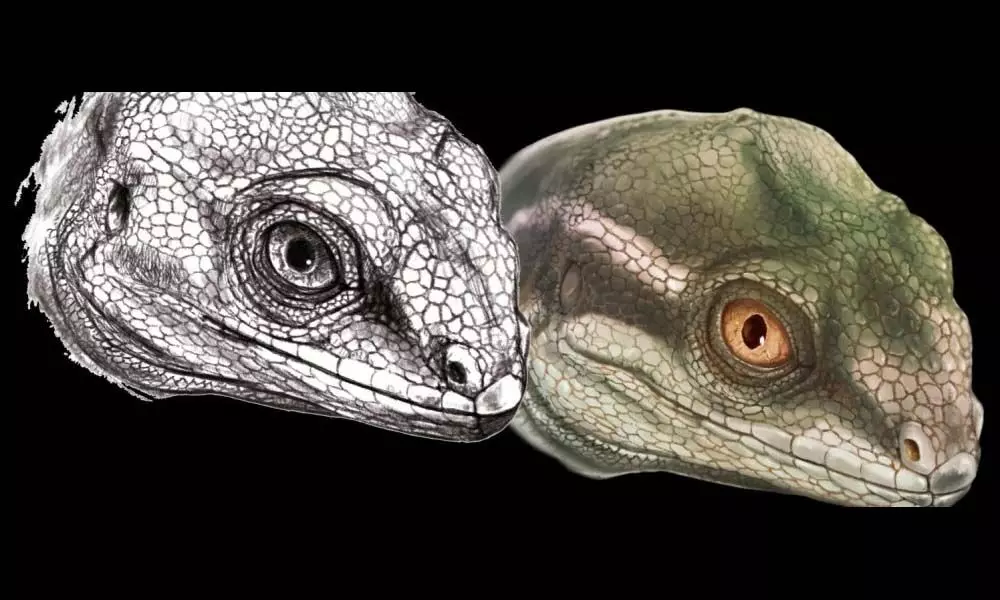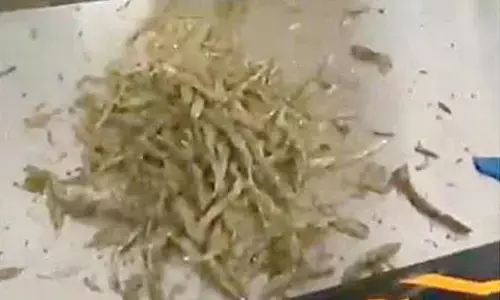Fossilized Ancestor Including All Scaled Reptiles Discovered By Scientists

Fossilized Ancestor Including All Scaled Reptiles Discovered By Scientists
- The lizard-like creature's tiny skull is profusely decorated with traits that imply it gave rise to all surviving lizards, snakes.
- The first fossil of its kind is located in South America, and the most complete early lepidosaur fossil ever found.
A gap in the reptile tree of life has been filled by scientists.
The lizard-like creature's tiny skull is profusely decorated with traits that imply it gave rise to all surviving lizards, snakes, and the single survivor of another reptile group found exclusively in New Zealand.
According to the worldwide team behind the discovery, Taytalura alcoberi is the most basic scaled reptile identified to date, also the first fossil of its kind is located in South America, and the most complete early lepidosaur fossil ever found.
Scaled reptiles including lizards, snakes, and New Zealand's tuatara make up the most diversified group of land-dwelling animals alive today. In comparison to the other arms of reptile evolution that generated crocodiles, birds, and turtles, little is known about their early origins.
Ricardo N. Martnez, palaeontologist and museum curator at Argentina's National University of San Juan explained that Taytalura skull is preserved and reveals details of how a very successful group of creatures, including over 10,000 species of snakes, lizards, and tuatara, evolved.
The discovery of the inch-lengthy cranium additionally has scientists reconsidering what they knew approximately reptiles withinside the Mesozoic Era, that is frequently recognised for its substantial reptiles and towering trees, and rethinking wherein the look for historic reptilian fossils have to move next.
Paleontologist and co-creator Sebastián Apesteguía on the Universidad Maimónides in Buenos Aires stayed that it changed into a universe of fauna sneaking amongst larger, clawed or hoofy paws.
Taytalura teaches us that we had been lacking vital data with the aid of using searching now no longer best for larger animals, however for additionally questioning that the starting place of lizards befell best withinside the Northern Hemisphere as proof regarded to guide till now.
The fossil, located in Ischigualasto Provincial Park in northwest Argentina, is ready eleven million years more youthful than the oldest recognised lepidosaurs from Europe, however one of the best-preserved specimens of its kind, this means that the crew could have greater self belief of their analyses.
Tiago R said that the greater primitive than a real lizard and this is some thing pretty special. Simões of his first impressions of the cranium, which measures 32 mm (1.25 inches) lengthy.
It's a fortunate find, particularly thinking about the origins of lepidosaurs were a gaping hollow in evolutionary know-how due to an extraordinarily patchy early fossil report comprising best a handful of fragmentary fossils, on the whole located in Europe and frequently poorly preserved, the studies crew explains.
Most other recognised fossils are still too incomplete, making it difficult to classify them definitively, says team member and palaeontologist Gabriela Sobral of the State Museum of Natural History Stuttgart in Germany.
The research group used a moderate micro-CT scanner to evaluate the structure of the skull and analysed the images in a cross-continental effort. The Taytalura skull has odd teeth and a strange combination of traits that the researchers hadn't expected to find in quite an early specimen, preserved in three dimensions with incredible details.
Martnez explains that the exceptional preservation quality of the fossils at this location in Argentina permitted something as delicate and tiny as this specimen to be maintained for 231 million years.
In Quechua, the language of the Quechua people of the South American Andes, tayta means father, while lura means lizard in Kakán, the language of the Diaguita people of northeastern Argentina, where the skull was discovered.
Some of its characteristics were more similar to modern tuatara than to surviving lizards and snakes, implying that the latter marks a dramatic evolutionary divergence - not the tuatara found on the windy New Zealand islands.
Martnez and his colleagues also used statistical methods to assess the probability of additional characteristics ties for Taytalura, as well as to estimate the time of key evolutionary deviations that led to the emergence of other forms of life.
Taytalura was able to establish its location in the evolutionary tree, situated between real lizards and tuatara, and all other reptiles, thanks to these analyses, which were based on a large dataset of reptilian fossils.
Furthermore, the invention of Taytalura in Argentina shows that current lepidosaurs were likely capable of migrating much farther than previously thought thousands of miles across the ancient supercontinent Pangea, which eventually split into the continents we see today, Europe to the north and South America to the south.
Meanwhile, the little reptile has had quite a voyage. The findings were reported in the journal Nature.


















